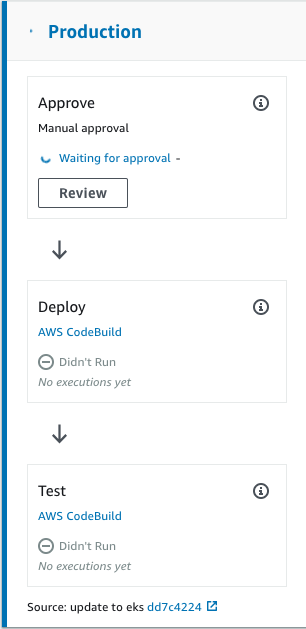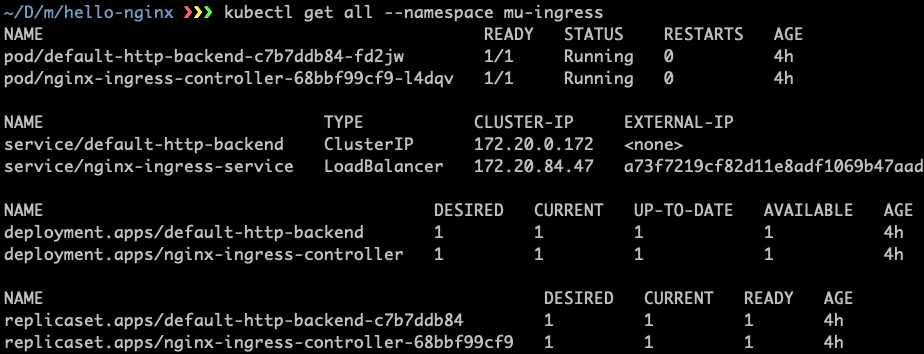AWS Open Source Blog
Announcing EKS Support in mu
Getting started with application development on Amazon EKS can require you to create the Kubernetes cluster, code repos, and configure deployment pipelines to continuously push code changes to the cluster. In this post, Casey Lee of Stelligent shows how mu, an open source tool, can be used to simplify the declaration and administration of all AWS resources so that you can focus on your application.
– Arun
In an earlier post, Pipelines For Container Applications Made Easy with mu, we saw how quickly you can build CI/CD pipelines for container workloads with the mu open source tool. The pipelines leveraged services such as AWS CodeBuild and AWS CodePipeline for orchestrating the build and deployment of their container applications. Additionally, mu used Amazon Elastic Container Service (Amazon ECS) for running the workloads.
In a recent release, mu added support for Amazon Elastic Container Service for Kubernetes (Amazon EKS). In this post, we’ll demonstrate how to use mu to setup a CI/CD pipeline to deploy an application to EKS. First, let’s review the architecturally-significant components of the environment that mu creates:
- EKS Cluster – the control plane for the Kubernetes cluster that is offered as a managed service by EKS.
- EKS Worker Nodes – an auto scaling group of EC2 instances that represent the worker nodes in the cluster.
- RBAC – the ConfigMap used to associate IAM Users and Roles to Kubernetes users, as well as the role binding from those users to Kubernetes roles.
- Ingress Controller – the NGINX ingress controller to support external access to services within the cluster.

Let’s Try It Out!
For demonstration purposes, we will use the same sample application (github.com/cplee/hello-nginx) from the prior post. Fork the repo and clone it locally. The mu.yml requires a few changes to target EKS:
###
# Define 2 environments, both with `eks` provider
###
environments:
- name: acceptance
provider: eks
- name: production
provider: eks
###
# Configure an ingress with a route for paths /*
# to port 80 in the container
###
service:
port: 80
pathPatterns:
- /*
###
# Configure IAM user `casey.lee` with admin access
# in the EKS cluster
###
rbac:
- role: admin
users:
- casey.leeCommit and push the changes back to GitHub before we build a pipeline with mu. If this is your first time using mu, you can run the following command to download the mu binary file and have it added to your path:
curl -s https://getmu.io/install.sh | shThe pipeline is created by running the following command. It will prompt you for a GitHub personal access token that CodePipeline requires to configure the commit hook.
mu pipeline up



Once the pipeline completes, your application will now be running on a newly-created EKS cluster. Since EKS offers an upstream Kubernetes experience, you can use tools such as kubectl to interact with the cluster. By default, only the IAM role used by CloudFormation to provision the EKS cluster will have access to manage the resources in the cluster. However, since I specified my IAM User in the mu.yml above, I can use my IAM credentials to communicate with the cluster. First, I’ll need to update my kubeconfig with connection information for the new cluster:
![]()
Next, use the new context that was created:
![]()
You can now use kubectl to view basic information about the cluster:

Additionally, you can see the detail of the ingress controller and the sample application that was deployed:

Details about the EKS cluster are viewable via mu. Additionally, you can determine the URL of the ELB to then test the application:


Why Open Source?
At Stelligent, we help our customers build continuous delivery pipelines on AWS. One of our core values is sharing. We want to be open with our customers and give them access to the tools we use on our engagements with them. By open sourcing mu, we are able to empower our customers to have a sense of ownership of the tool we are using in their accounts.
Another goal with creating and open sourcing mu was to share our learnings and opinions with the community on how best to implement these pipelines. Our hope is for the community to use the tool and evolve it based on their use cases, and provide feedback on even better ways to approach the problems we are trying to solve.
Contribute to mu!
If you have an interest in continuous delivery pipelines for container workloads, we need your help! Here’s how:
- Try it out – Visit the quickstart on the mu wiki to download and install the tool. You can also follow a brief tutorial to create your first service.
- Share your feedback – Ask questions and let us know what you think by chatting with us on in our Gitter room. Also, don’t hesitate to create a new issue with any feature requests.
- Contribute – Check out the opportunities to help with upcoming EKS features on GitHub issues. Pull requests always welcome! Visit the contributing guide for more details.
The content and opinions in this post are those of the third-party author and AWS is not responsible for the content or accuracy of this post.
 Casey Lee
Casey Lee